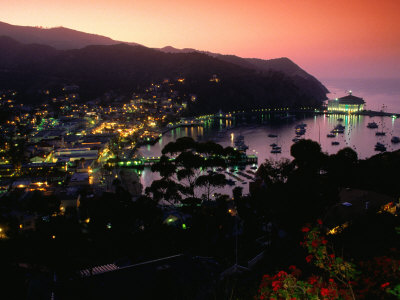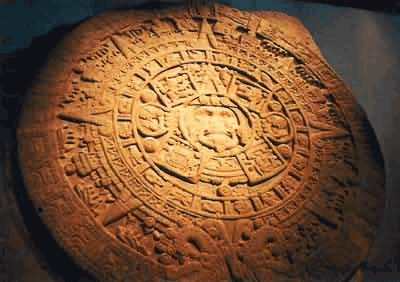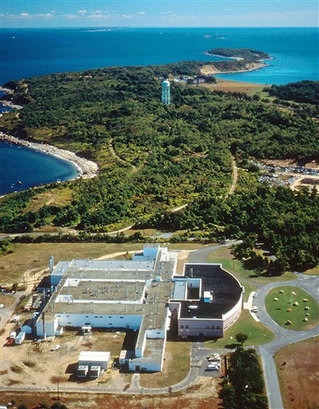 Orcas, or killer whales, positioned themselves prominently and made it clear they were the real experts -- and that no mere human on a surfboard was going to deny them whatever waves they wanted.
Orcas, or killer whales, positioned themselves prominently and made it clear they were the real experts -- and that no mere human on a surfboard was going to deny them whatever waves they wanted."They knew what they were doing," Michael Cunningham, a Northern Advocate photographer and witness, told the newspaper. "They looked like they'd done it before."
New Zealand's orcas, unlike those in other parts of the world, are known to occasionally embark on surfing forays, but rarely is someone on the beach ready with a camera.
Cunningham had been bodysurfing when the orcas arrived Friday, but quickly swam ashore to grab his camera. His images, which show orcas charging through the waves, remain in high demand.
 Ingrid Visser, founder of the Orca Research Trust near Sandy Bay, said few sharp images of this phenomenon exist and that Cunningham's photos could be used in a research paper on the island nation's surfing orcas.
Ingrid Visser, founder of the Orca Research Trust near Sandy Bay, said few sharp images of this phenomenon exist and that Cunningham's photos could be used in a research paper on the island nation's surfing orcas.Visser, a foremost authority on orcas, said she does not know of anywhere else on earth where orcas spend a significant amount of time riding waves.
She and a research crew had observed the same orcas surfing at different beaches the day before and after their now-famous session at Sandy Bay, which is north of Auckland.
Because Visser spends so much time studying orcas she has witnessed them surfing many times, but always from a boat behind the breaking waves.
 However, that's also a sight to behold because their kick-outs, as the waves close out or get too close to land, are far more dramatic than those of ordinary surfers.
However, that's also a sight to behold because their kick-outs, as the waves close out or get too close to land, are far more dramatic than those of ordinary surfers."They'll often come right out of the back of the wave and breach out into the trough that follows behind," Visser said in a Monday interview. "And that's really exciting to see as well."
She said New Zealand orcas are a distinct population and that playfully riding waves, the way dolphins ride waves in many places throughout the world, is part of their culture.
However, since orcas can weigh up to eight tons and are atop the food chain, surfing alongside them can be unsettling, to say the least.
"Some of the surfers, like the orca, just go for it and have an absolute buzz," Visser said. "And then other surfers freak out and tell people how it was a life-threatening situation, so you get both extremes."
New Zealand's orcas prey largely on rays and small sharks and have never been implicated in attacks on humans.
Cunningham said foreign tourists were the first out of the water when the orcas appeared Friday. He had been swimming for about an hour before they arrived, and after catching a wave in he looked back and saw several orcas, including a calf, riding a large wave shoreward.
Had he been holding a camera then, it would have been quite the family snapshot.
A unicorn? In Ontario? Hogwash!
Not so fast, doubting Thomas. The video was followed up by a rather official-sounding backer: the  Ontario Science Center, an agency of the Canadian government. A news release was issued:
Ontario Science Center, an agency of the Canadian government. A news release was issued:
"Amateur video depicting what could be one of the most elusive legendary creatures, the unicorn, has been captured on film by a Toronto resident. ... The Science Centre is reviewing the footage frame-by-frame to determine whether Hickey-Jones' claim is legitimate."
The center set up an emergency unicorn hotline for more information and sightings.
Could it be true? Could a unicorn exist?...
In a phone call yesterday to the center's media office, the spokeswoman predicted a new unicorn would be sighted sometime in November. Oh really? They're predicting their sightings now?The group just happens to have an new exhibition to promote "Mythic Creatures: Dragons, Unicorns & Mermaids" and, well, the unicorn sighting may have something to do with that, the spokeswoman conceded.
Way to ruin a dream, Ontario Science Center.
 Amateur video depicting what could be one of the most elusive legendary creatures, the unicorn, has been captured on film by a Toronto resident. The video in question, shot by a local birdwatcher, Peter Hickey-Jones, shows what appears to be a white horse with a single horn on its head emerging from the trees in the Don Valley wetland.
Amateur video depicting what could be one of the most elusive legendary creatures, the unicorn, has been captured on film by a Toronto resident. The video in question, shot by a local birdwatcher, Peter Hickey-Jones, shows what appears to be a white horse with a single horn on its head emerging from the trees in the Don Valley wetland. "I was trying to film a pileated woodpecker when I saw what looked like a bright white horse in the distance. When I got a little closer, I noticed the horn on its head. I'm not one to jump to conclusions but I'm certain beyond the shadow of a doubt that what I saw was a unicorn. I'm  just glad I got it on film."
just glad I got it on film."
Hickey-Jones brought the footage to the Ontario Science Centre to be analyzed by experts. The Science Centre is reviewing the footage frame-by-frame to determine whether Hickey-Jones' claim is legitimate. With closer examination, Science Centre staff is hoping to establish whether or not a genuine unicorn sighting has occurred.
Whether you’re after all-out luxury or sand-between-the-toes casual, there’s a romantic island for you. And while many of these dream destinations have “remote” and “secluded” as their principle selling points, others are surprisingly close to home. (One you can practically see from the Hollywood sign.)
No matter whether you’re a new couple just getting to know each other or you’re celebrating your golden anniversary, these romantic islands will help you holiday happily ever after.
Of the 1,192 islets that make up this island nation in the Indian Ocean, roughly 1,000 are uninhabited. Suffice to say, your chances of finding romantic seclusion are pretty high. Like most of the resorts here, the Conrad Maldives Hotel occupies its own private atoll, called Rangali Island. The romance factor kicks in before you even arrive, thanks to a seaplane ride over the shallow, impossibly clear lagoon. Soon enough, you’re dining in the underwater restaurant and kicking back in the over-water spa.
Molokai, Hawaii
A conspicuous absence of international hotel chains is just one reason this idyll—situated east of Oahu in the Hawaiian archipelago—draws romantics from all over. Hike to remote waterfalls, kayak secluded rocky coastlines, and ride donkeys into the lush valleys, or just laze beachside. (Head for the golden sands of secluded three-mile-long Papohaku Beach, at the far-west end of the island.) With just one traffic light on the island, the only gridlock you’ll encounter is caused by colonies of curious sea turtles frolicking in the outrageously clear waters.
Capri, Italy
Sure, noon in Capri Town can be a tourist swarm, but the bulk of visitors depart on the last ferry back to Naples or Sorrento—leaving the island blissfully free for lovers. And this dramatically craggy outcrop, a Mediterranean Garden of Eden splashed with floral color and perfumed by lemon trees and herb gardens, has remained a magnet for the A-list since antiquity, when Emperor Tiberius set up camp here.
St. Lucia, Caribbean
If the Caribbean Sea were a catwalk, St. Lucia would be its most bankable supermodel. This 27-mile-long island is lush, mountainous, and blessed with gorgeous beaches and verdant cocoa plantations. The jade-green twin peaks of the Pitons, jungle-swathed volcanic plugs that rise from a silvery ocean on the southwest coast, are the Caribbean’s most striking backdrop.
Bocas del Toro, Panama
Located in the Caribbean Sea near the border with Costa Rica, this group of islands is all about low-key relaxation with a Latin American flavor, pitch-perfect for sybarites who don’t want to pack a designer bikini. The main island of Colon has a buzzy downtown full of waterfront bars and laid-back nightclubs, while the smaller islands offer deserted beaches, rainforests, mangroves, and coral reefs.
Catalina Island, California
Just 22 miles southwest of Los Angeles, Santa Catalina has a certain Mediterranean flavor. Yachts jostle in a glinting harbor, sorbet-colored homes cascade down the hillside, and the secluded coves are ready-made for romance—including the aptly named Lover’s Cove, east of Avalon.
Santorini, Greece
Sweeping views over a picture-perfect caldera—the result of a volcanic eruption around 1600 B.C.—is just one factor in Santorini’s romantic charm. Gorgeous, striated cliffs and black-sand beaches don’t hurt, either. Head to the famously picturesque village of Oia (book a room at the 18-suite Mystique) with its classic whitewashed, cliff-edge architecture, blue-domed churches, and stone houses overhung with bougainvillea canopies.
If your idea of Eden is unpaved roads, truly deserted beaches, and nary a nightclub, this 68-square-mile island in the Eastern Caribbean is for you. Barbuda features just a handful of high-end hotels, including Coco Point Lodge, on its own 164-acre peninsula fronting glorious pink-sand beaches. Take a boat trip to the Frigate Bird Sanctuary on a lagoon in the island’s northwest and ogle the 5,000 namesake birds that call it home.
The South Pacific fantasy of swaying palm trees and extravagantly lush scenery reaches its fullest expression here. There are just 25 cottages on this privately owned resort, which occupies the entire island, each with a private pool, dining pavilion, and outdoor hot tub and shower. While the resort attracts deep-pocketed travelers, don’t expect glitzy lobbies. The emphasis is on rustic, pared-back luxury; every detail seems crafted to appeal to couples, including the lagoon pool with its man-made “islands” big enough for two.
Pamalican Island, The Philippines
You’ll find only one resort here—Amanpulo, set on its own private island southwest of Manila with just 40 secluded pitched-roof traditional villas, strung along a pristine beach with sand so white it’s blinding. Beachcombers can navigate the entire island on foot in less than two hours, keeping their eyes out for baby sharks, kingfishers, and sea turtles, which lay their eggs here between March and October.
Hidden in a Hubble Space Telescope photo released earlier this year is a small smudge of light that European astronomers now calculate is a galaxy from 13.1 billion years ago. That's a time when the universe was very young, just shy of 600 million years old. That would make it the earliest and most distant galaxy seen so far.
By now the galaxy is so ancient it probably doesn't exist in its earlier form and has already merged into bigger neighbors, said Matthew Lehnert of the Paris Observatory, lead author of the study published online Wednesday in the journal Nature.
 "We're looking at the universe when it was a 20th of its current age," said California Institute of Technology astronomy professor Richard Ellis, who wasn't part of the discovery team. "In human terms, we're looking at a 4-year-old boy in the life span of an adult."
"We're looking at the universe when it was a 20th of its current age," said California Institute of Technology astronomy professor Richard Ellis, who wasn't part of the discovery team. "In human terms, we're looking at a 4-year-old boy in the life span of an adult."
While Ellis finds the basis for the study "pretty good," there have been other claims about the age of distant space objects that have not held up to scrutiny. And some experts have questions about this one. But even the skeptics praised the study as important and interesting.
The European astronomers calculated the age after 16 hours of observations from a telescope in Chile that looked at light signatures of cooling hydrogen gas.
Earlier this year, astronomers had made a general estimate of 600 to 800 million years after the Big Bang for the most distant fuzzy points of light in the Hubble photograph, which was presented at an astronomy meeting back in January.
In the new study, researchers focused on a single galaxy in their analysis of hydrogen's light signature, further pinpointing the age. Garth Illingworth of the University of California, Santa Cruz, who was the scientist behind the Hubble image, said it provides confirmation for the age using a different method, something he called amazing "for such faint objects."
The new galaxy doesn't have a name — just a series of letters and numbers. So Lehnert said he and colleagues have called it "the high red-shift blob. "Because it takes so long for the light to travel such a vast time and distance, astronomers are seeing what the galaxy looked like 13.1 billion years ago at a time when it was quite young — maybe even as young as 100 million years old — Lehnert said. It has very little of the carbon or metal that we see in more mature stars and is full of young, blue massive stars, he said.
What's most interesting to astronomers is that this finding fits with theories about when the first stars and galaxies were born. This galaxy would have formed not too soon after them.
"We're looking almost to the edge, almost within 100 million years of seeing the very first objects," Ellis said. "One hundred million years to a human seems an awful long time, but in astronomical time periods, that's nothing compared to the life of the stars."
 With the upcoming disaster film "2012" and the current hype about Mayan calendars and doomsday predictions, it seems like a good time to put such notions in context.
With the upcoming disaster film "2012" and the current hype about Mayan calendars and doomsday predictions, it seems like a good time to put such notions in context. Most prophets of doom come from a religious perspective, though the secular crowd has caused its share of scares as well. One thing the doomsday scenarios tend to share in common: They don't come to pass.
Here are 10 that didn't pan out, so far:
1.The Prophet Hen of Leeds, 1806
History has countless examples of people who have proclaimed that the return of Jesus Christ is imminent, but perhaps there has never been a stranger messenger than a hen in the English town of Leeds in 1806. It seems that a hen began laying eggs on which the phrase "Christ is coming" was written. As news of this miracle spread, many people became convinced that doomsday was at hand — until a curious local actually watched the hen laying one of the prophetic eggs and discovered someone had hatched a hoax.
2.The Millerites, April 23, 1843
A New England farmer named William Miller, after several years of very careful study of his Bible, concluded that God's chosen time to destroy the world could be divined from a strict literal interpretation of scripture. As he explained to anyone who would listen, the world would end some time between March 21, 1843 and March 21, 1844. He preached and published enough to eventually lead thousands of followers (known as Millerites) who decided that the actual date was April 23, 1843. Many sold or gave away their possessions, assuming they would not be needed; though when April 23 arrived (but Jesus didn't) the group eventually disbanded—some of them forming what is now the Seventh Day Adventists.
3.Mormon Armageddon, 1891 or earlier
Joseph Smith, founder of the Mormon church, called a meeting of his church leaders in February 1835 to tell them that he had spoken to God recently, and during their conversation he learned that Jesus would return within the next 56 years, after which the End Times would begin promptly.
4.Halley's Comet, 1910
In 1881, an astronomer discovered through spectral analysis that comet tails include a deadly gas called cyanogen (related, as the name imples, to cyanide). This was of only passing interest until someone realized that Earth would pass through the tail of Halley's comet in 1910. Would everyone on the planet be bathed in deadly toxic gas? That was the speculation reprinted on the front pages of "The New York Times" and other newspapers, resulting in a widespread panic across the United States and abroad. Finally even-headed scientists explained that there was nothing to fear.
In May 1980, televangelist and Christian Coalition founder Pat Robertson startled and alarmed many when — contrary to Matthew 24:36 ("No one knows about that day or hour, not even the angels in heaven...") he informed his "700 Club" TV show audience around the world that he knew when the world would end. "I guarantee you by the end of 1982 there is going to be a judgment on the world," Robertson said.
6.Heaven's Gate, 1997
When comet Hale-Bopp appeared in 1997, rumors surfaced that an alien spacecraft was following the comet — covered up, of course, by NASA and the astronomical community. Though the claim was refuted by astronomers (and could be refuted by anyone with a good telescope), the rumors were publicized on Art Bell's paranormal radio talk show "Coast to Coast AM." These claims inspired a San Diego UFO cult named Heaven's Gate to conclude that the world would end soon. The world did indeed end for 39 of the cult members, who committed suicide on March 26, 1997.
7.Nostradamus, August 1999
The heavily obfuscated and metaphorical writings of Michel de Nostrdame have intrigued people for over 400 years. His writings, the accuracy of which relies heavily upon very flexible interpretations, have been translated and re-translated in dozens of different versions. One of the most famous quatrains read, "The year 1999, seventh month / From the sky will come great king of terror." Many Nostradamus
devotees grew concerned that this was the famed prognosticator's vision of Armageddon.
As the last century drew to a close, many people grew concerned that computers might bring about doomsday. The problem, first noted in the early 1970s, was that many computers would not be able to tell the difference between 2000 and 1900 dates. No one was really sure what that would do, but many suggested catastrophic problems ranging from vast blackouts to nuclear holocaust. Gun sales jumped and survivalists prepared to live in bunkers, but the new millennium began with only a few glitches.
9.May 5, 2000
In case the Y2K bug didn't do us in, global catastrophe was assured by Richard Noone, author of the 1997 book "5/5/2000 Ice: the Ultimate Disaster." According to Noone, the Antarctic ice mass would be three miles thick by May 5, 2000 — a date in which the planets would be aligned in the heavens, somehow resulting in a global icy death (or at least a lot of book sales). Perhaps global warming kept the ice age at bay.
10.God's Church Ministry, Fall 2008
According to God's Church minister Ronald Weinland, the end times are upon us-- again. His 2006 book "2008: God's Final Witness" states that hundreds of millions of people will die, and by the end of 2006, "there will be a maximum time of two years remaining before the world will be plunged into the worst time of all human history. By the fall of 2008, the United States will have collapsed as a world power, and no longer exist as an independent nation." As the book notes, "Ronald Weinland places his reputation on the line as the end-time prophet of God."
It's a good news/bad news situation for believers in the 2012 Mayan apocalypse. The good news is that the Mayan "Long Count" calendar may not end on Dec. 21, 2012 (and, by extension, the world may not end along with it). The bad news for prophecy believers? If the calendar doesn't end in December 2012, no one knows when it actually will — or if it has already.
A new critique, published as a chapter in the new textbook "Calendars and Years II: Astronomy and Time in the Ancient and Medieval World" (Oxbow Books, 2010), argues that the accepted conversions of dates from Mayan to the modern calendar may be off by as much as 50 or 100 years. That would throw the supposed and overhyped 2012 apocalypse off by decades and cast into doubt the dates of historical Mayan events. (The doomsday worries are based on the fact that the Mayan calendar ends in 2012, much as our year ends on Dec. 31.)
 The Mayan calendar was converted to today's Gregorian calendar using a calculation called the GMT constant, named for the last initials of three early Mayanist researchers. Much of the work emphasized dates recovered from colonial documents that were written in the Mayan language in the Latin alphabet, according to the chapter's author, Gerardo Aldana, University of California, Santa Barbara professor of Chicana and Chicano Studies.
The Mayan calendar was converted to today's Gregorian calendar using a calculation called the GMT constant, named for the last initials of three early Mayanist researchers. Much of the work emphasized dates recovered from colonial documents that were written in the Mayan language in the Latin alphabet, according to the chapter's author, Gerardo Aldana, University of California, Santa Barbara professor of Chicana and Chicano Studies.
Later, the GMT constant was bolstered by American linguist and anthropologist Floyd Lounsbury, who used data in the Dresden Codex Venus Table, a Mayan calendar and almanac that charts dates relative to the movements of Venus.
 "He took the position that his work removed the last obstacle to fully accepting the GMT constant," Aldana said in a statement. "Others took his work even further, suggesting that he had proven the GMT constant to be correct."
"He took the position that his work removed the last obstacle to fully accepting the GMT constant," Aldana said in a statement. "Others took his work even further, suggesting that he had proven the GMT constant to be correct."
But according to Aldana, Lounsbury's evidence is far from irrefutable.
"If the Venus Table cannot be used to prove the FMT as Lounsbury suggests, its acceptance depends on the reliability of the corroborating data," he said. That historical data, he said, is less reliable than the Table itself, causing the argument for the GMT constant to fall "like a stack of cards."
Aldana doesn't have any answers as to what the correct calendar conversion might be, preferring to focus on why the current interpretation may be wrong. Looks like end-of-the-world theorists  may need to find another ancient calendar on which to pin their apocalyptic hopes.
may need to find another ancient calendar on which to pin their apocalyptic hopes.
LiveScience.com chronicles the daily advances and innovations made in science and technology. We take on the misconceptions that often pop up around scientific discoveries and deliver short, provocative explanations with a certain wit and style. Check out our science videos, Trivia & Quizzes and Top 10s. Join our community to debate hot-button issues like stem cells, climate change and evolution. You can also sign up for free newsletters, register for RSS feeds and get cool gadgets at the LiveScience Store.
 "How can it be ordinary? There is something going on."Despite clear skies, it was not easy to make out the tiny object shimmering overhead."You really have to look up to see it," said one witness, who gave only his first name, Rico. "It's a little crazy. I guess that's why they call it an unidentified flying object because they don't know what it is."Not long after the first sightings, messages began appearing on Twitter linking to a month-old press release announcing the publication of a book by a retired NORAD officer predicting that UFOs would buzz the earth's major cities on Oct. 13.
"How can it be ordinary? There is something going on."Despite clear skies, it was not easy to make out the tiny object shimmering overhead."You really have to look up to see it," said one witness, who gave only his first name, Rico. "It's a little crazy. I guess that's why they call it an unidentified flying object because they don't know what it is."Not long after the first sightings, messages began appearing on Twitter linking to a month-old press release announcing the publication of a book by a retired NORAD officer predicting that UFOs would buzz the earth's major cities on Oct. 13.The Federal Aviation Administration said it received several calls to its operations center but after reviewing radar data, the agency could not find anything out of the ordinary."We re-ran radar to see if there was anything there that we can't account for but there is nothing in the area," said spokesman Jim Peters. "There was some helicopter traffic over the river at that time and we checked with LaGuardia Tower. And they said they had nothing going low at that time.""Nothing that we can account for would prompt this kind of response," he said.Peters said if it was a weather balloon or any kind of organized balloon release, authorities should have been notified in advance. Police officials said they had received no notification.
Residents of Iztapalapa cooked up a 230-foot-long, almost 1½-ton enchilada on Sunday. Guinness record official Ralph Hannah announced that it was the world's biggest.
The colossal concoction was made of corn tortillas, white onions, serrano chilis, green tomatoes, avocado, cheese, cream and a sea of salsas, among other ingredients.
"With this Guinness record we are showing the world that Iztapalapa is a high-level tourist destination," said Mexico City tourism secretary Alejandro Rojas.
Mexico City has gone for a number of world records recently, including the largest number of people dancing Michael Jackson's "Thriller" and most people kissing simultaneously.
The world's largest enchilada is the latest food to enter the Guinness Book of Records thanks to its impressive size.
Last year a cafe in Sydney, Australia, created the world's biggest burger, weighing in at 15 stone.
The world's longest hot dog was assembled in 2006 in Japan, measuring a mighty 198 feet long.



 The findings, published in the Proceedings of the National Academy of Sciences (PNAS) journal on Monday, indicate that Palaeolithic Europeans ground down plant roots similar to potatoes to make flour, which was later whisked into dough.
The findings, published in the Proceedings of the National Academy of Sciences (PNAS) journal on Monday, indicate that Palaeolithic Europeans ground down plant roots similar to potatoes to make flour, which was later whisked into dough.
"It's like a flat bread, like a pancake with just water and flour," said Laura Longo, a researcher on the team from the Italian Institute of Prehistory and Early History.
"You make a kind of pita and cook it on the hot stone," she said, describing how the team replicated the cooking process. The end product was "crispy like a cracker but not very tasty," she added.
The grinding stones, each of which fit comfortably into an adult's palm, were discovered at archaeological sites in Italy, Russia and the Czech Republic.
The researchers said their findings throw mankind's first known use of flour back some 10,000 years, the previously oldest evidence having been found in Israel on 20,000 year-old grinding stones.
The findings may also upset fans of the Paleolithic diet, which follows earlier research that assumes early humans ate a meat-centered diet.
Also known as the caveman diet, the regime frowns on carbohydrate-laden foods like bread and cereal, and modern-day adherents eat only lean meat, vegetables and fruit.
It was first popularized by the gastroenterologist Walter L. Voegtlin, whose 1975 book lauded the benefits of the hunter-gatherer diet.
Italy's European Championship qualifier against Serbia was dramatically abandoned in Genova after the visiting fans threw flares onto the pitch and lighting fireworks.
The teams came out and began to line up for the national anthems but then were sent back into the changing rooms as police in riot gear came out to confront the fans.
Serbian supporters clashed earlier in the day with police and glass partitions were broken in the stadium as fans with their heads covered climbed up onto them and began cutting through a mesh fence with tools.
The teams eventually came back out and began warming up again but there was no immediate sign that the game would begin.
'We just had a meeting with the UEFA delegate, the Serbian police and our police to see if we can play but it seems very doubtful,' said Italian football federation general director Antonello Valentini, speaking to Italian broadcasters RAI.
Even before the delay, Serbia's No 1 goalkeeper Vladimir Stojkovic is understood to have pleaded with officials to be dropped following threats outside his hotel earlier.
 At one point, the Serbia squad walked over and appeared to applaud their fans ironically and ask them to calm down.
At one point, the Serbia squad walked over and appeared to applaud their fans ironically and ask them to calm down.
'We didn't applaud, we calmed down the fans,' said Serbia captain Dejan Stankovic.
The unsavory incident sours a week to forget for Serbia following the 3-1 home defeat to Estonia on Friday.
 Columbus Day some states declare this day as the Columbus Day holiday and people enjoy a day off from work and students don’t go to schools, on the other hand some of the states of the country don’t recognize this day and everything goes normally and no Columbus Day holiday is celebrated. The very reason for all this is that the exact birth date of Christopher Columbus is not known, according to people it is between the twenty fifth of August and the thirty first of October. We don’t know the exact date of birth of the discoverer of the American continent. In the most parts of the country the jobs that are affiliated with the American government are closed on the 11th of October. The 11th of October has been decided as the Columbus Day and normally this day is declared a holiday, but many organizations and states don’t recognize this day. The stocks will remain open today and if you also work in such a place then you have to go to work today, this shows that the corporate world does not recognize the Columbus Day. The United States is actually not the only one that is going to celebrate the Columbus Day today, many of other countries that include several of the European countries will also celebrate the Columbus Day.
Columbus Day some states declare this day as the Columbus Day holiday and people enjoy a day off from work and students don’t go to schools, on the other hand some of the states of the country don’t recognize this day and everything goes normally and no Columbus Day holiday is celebrated. The very reason for all this is that the exact birth date of Christopher Columbus is not known, according to people it is between the twenty fifth of August and the thirty first of October. We don’t know the exact date of birth of the discoverer of the American continent. In the most parts of the country the jobs that are affiliated with the American government are closed on the 11th of October. The 11th of October has been decided as the Columbus Day and normally this day is declared a holiday, but many organizations and states don’t recognize this day. The stocks will remain open today and if you also work in such a place then you have to go to work today, this shows that the corporate world does not recognize the Columbus Day. The United States is actually not the only one that is going to celebrate the Columbus Day today, many of other countries that include several of the European countries will also celebrate the Columbus Day.



BEIJING -- Top-seeded Novak Djokovic beat David Ferrer of Spain 6-2, 6-4 on Monday to successfully defend his China Open title.
The world No. 2 cruised through the first set of a match that had been rained out Sunday, before falling behind 4-2 in the second.
At 4-3, the eighth-ranked Ferrer battled to hold serve and defend his lead, but Djokovic was relentless, breaking him to take the set and, two games later, the match.
"I started off really well but then I lost the momentum, I kind of lost the rhythm, got him back into the match with some unforced errors," said Djokovic, who converted four of six break points while being broken only once to wrap up his second title of the season.
 "It wasn't a really nice looking match from both sides. We made a lot of unforced errors, especially him. He made my life a little bit easier at the end of the second set, where, with his unforced errors, I got back into the set," the Serb said.
"It wasn't a really nice looking match from both sides. We made a lot of unforced errors, especially him. He made my life a little bit easier at the end of the second set, where, with his unforced errors, I got back into the set," the Serb said.
Djokovic, runner-up at last month's U.S. Open, said he was pleased with his improved serve, which he says is largely responsible for the run of success he's experienced since Wimbledon.
The 23-year-old had somewhat more difficulty accounting for his success in Beijing, where he won the Olympic bronze medal in 2008 in addition to his back-to-back China Open titles. The playing surface -- and the local cuisine -- seem to suit his style of play, Djokovic said.
"There's something special about this place."
Djokovic now moves on to the ATP Masters in Shanghai, where he will face either Ivan Ljubicic of Croatia or Chinese qualifier Zhang Ze on Wednesday.
"This is definitely a confidence boost for me. The last two, three months ... feeling much more comfortable and confident on the court, playing the aggressive game and service is working for me which is a great thing to have," he said. "Let's see if I can keep it up. Energy-wise, I'm fresh."
Ferrer has less time to rest with a match against Frenchman Michael Llodra in Shanghai on Tuesday. He also pointed to the eighth game of the second set as having decided Monday's match.
"I had my chance there, but didn't do it," said the 28-year-old, who entered the final after beating Ljubicic in three sets in Saturday's semifinals. "Maybe when I lost this game, I lost a little bit my concentration and couldn't come back and play regular again."
New world No. 1 Caroline Wozniacki plays No. 3 Vera Zvonareva later Monday for the women's title. Zvonareva has won three of their previous five meetings.
The Simpsons, Thursday 21 October, 1930BST, Sky 1 HD and Sky 1
UK graffiti artist Banksy has created a controversial title sequence for long-running US animation The Simpsons.
The intro, which was shown in the US on Sunday, opens with the street artist's tag scrawled across the town of Springfield.
It closes with a minute-long sequence showing dozens of sweatshop workers in a warehouse painting cartoon cells and making Simpsons merchandise.
The episode, called MoneyBart, will be shown in the UK on 21 October.
It is the first time an artist has been invited to storyboard part of the show.
The extended sequence was apparently inspired by reports the show outsources the bulk of their animation to a company in South Korea.
Delays and disputes
It features Bart Simpson with his face covered as he writes all over his classroom walls.
While in the sweatshop, kittens are thrown into a wood chipper so their fur can be used to stuff Bart Simpson dolls and a chained unicorn is used to punch holes in Simpsons DVDs.
According to the street artist, his storyboard led to delays, disputes over broadcast standards and a threatened walk out by the animation department.
"This is what you get when you outsource," joked The Simpsons executive producer Al Jean.
Other famous Britons to have contributed to the show include Tony Blair, Simon Cowell and Ricky Gervais.
Gervais also wrote Homer Simpson, This Is Your Wife in 2006, and is to make another appearance on the show next year.
 UFO? Kite? New Chinese military aircraft? Whatever it was last month, it's still hovering in the news.
UFO? Kite? New Chinese military aircraft? Whatever it was last month, it's still hovering in the news.China's state-run People's Daily reported Sept. 13 (in its "Life & Culture" section) that air traffic controllers "observed with instruments" a UFO about 20 miles from Baotou, the largest city in Inner Mongolia, about 8 p.m. on Sept. 11. Flights were diverted to a secondary airport and three flights were forced to circle to avoid "collisions," a Baotou Airport spokeswoman said. Normal operations resumed after about an hour. The PD offered no details about the UFO.
 Yesterday, the UFO reappeared — in the saucy British tabloid The Sun, renewing interest in the night lights over northeastern China. Accompanying a photo, The Sun wrote that a "major" airport "was forced to shut down to prevent packed passenger jets crashing into a UFO." Without citing a source, the paper described the object as, quote, "flat and tubular" (a seeming oxymoron ) and wrote that it "hovered two miles from Bootee" (its transliteration of Baotou). "Astonished officials say it then zoomed in to circle the airport before suddenly vanishing," according to The Sun.
Yesterday, the UFO reappeared — in the saucy British tabloid The Sun, renewing interest in the night lights over northeastern China. Accompanying a photo, The Sun wrote that a "major" airport "was forced to shut down to prevent packed passenger jets crashing into a UFO." Without citing a source, the paper described the object as, quote, "flat and tubular" (a seeming oxymoron ) and wrote that it "hovered two miles from Bootee" (its transliteration of Baotou). "Astonished officials say it then zoomed in to circle the airport before suddenly vanishing," according to The Sun. Last month's report was the ninth in three months, with at least eight sightings reported in several provinces between late June and late July. One in July that briefly closed an airport in Hangzhou turned out to be part of a military test at a nearby air base. Another UFO was just jet contrails, and one other was a kite.
Last month's report was the ninth in three months, with at least eight sightings reported in several provinces between late June and late July. One in July that briefly closed an airport in Hangzhou turned out to be part of a military test at a nearby air base. Another UFO was just jet contrails, and one other was a kite.The blurry photo in The Sun looks suspiciously like the UFO that disrupted air traffic in Hangzhou for an hour the night of July 7. And the details of that incident also have a familiar, earthly ring.
WASHINGTON – A "hidden" language spoken by only about 1,000 people has been discovered in the remote northeast corner of India by researchers who at first thought they were documenting a dialect of the Aka culture, a tribal community in the foothills of the Himalayas.
They found an entirely different vocabulary and linguistic structure.
Even the speakers of the tongue, called Koro, did not realize they had a distinct language, linguist K. David Harrison said Tuesday.
Culturally, the Koro speakers are part of the Aka community in India's Arunachal Pradesh state, and Harrison, associate professor of linguistics at Swarthmore College, said both groups merely considered Koro a dialect of the Aka language.
But researchers studying the groups found they used different words for body parts, numbers and other concepts, establishing Koro as a separate language, Harrison said.
"Koro is quite distinct from the Aka language," said Gregory Anderson, director of the Living Tongues Institute for Endangered Languages. "When we went there we were told it was a dialect of Aka, but it is a distant sister language."
 People of the Aka culture live in small villages near the borders of China, Tibet and Burma (also known as Myanmar). They practice subsistence hunting, farming and gathering firewood in the forest and tend to wear ornate clothing of hand-woven cloth, favoring red garments. Their languages are not well known, though they were first noted in the 19th century.
People of the Aka culture live in small villages near the borders of China, Tibet and Burma (also known as Myanmar). They practice subsistence hunting, farming and gathering firewood in the forest and tend to wear ornate clothing of hand-woven cloth, favoring red garments. Their languages are not well known, though they were first noted in the 19th century.
The region where they live in the foothills of the Himalaya Mountains requires a special permit to enter. There, the researchers crossed a mountain river on a bamboo raft and climbed steep hillsides to to reach the remote villages, going door-to-door among the bamboo houses that sit on stilts.
Harrison and Anderson spoke at a news conference organized by the National Geographic Society, which supported their work.
The northeast corner of India is known as a hotspot of language diversity and researchers were documenting some of the unwritten tongues when they came across Koro in research started in 2008.
The timing of their discovery was important.
"We were finding something that was making its exit, was on its way out. And if we had waited 10 years to make the trip, we might not have come across close to the number of speakers we found," said Anderson.
Previously undocumented languages are "noticed from time to time" Harrison said, so such a discovery is not rare. But at the same time linguists estimate that a language "dies" about every two weeks with the loss of its last speakers.
Counting Koro there are 6,910 documented languages in the world, Harrison said. But he added that is really just a best estimate that can change regularly.
Many languages around the world are considered endangered, including Koro, he explained, because younger people tend to shift to the more dominant language in a region.
Unusually, Koro has been maintained within the Aka community, the researchers said, even though there is intermarriage and the groups share villages, traditions, festivals and food. In addition to the estimated 800 to 1,200 Koro speakers, the West Kameng and East Kameng districts of Arunachal Pradesh contain 4,000 to 6,000 Aka speakers.
The Koro speakers "consider themselves to be Aka tribally, though linguistically they are Koro. It's an unusual condition, such arrangement doesn't usually allow for maintenance of the minor language," Anderson said.
The threat, however, is from the spread of Hindi, a dominant language in India, and many youngsters go to boarding schools where they learn Hindi or English.
The researchers said they hope to figure out how the Koro language managed to survive within the Aka community.
They said Koro is a member of the Tibeto-Burman language family, a group of some 400 languages that includes Tibetan and Burmese. While Koro differs from Aka, it does share some things with another language, Tani, which is spoken farther to the east.
The research was started in 2008 to document two little known languages, Aka and Miji, and the third language, Koro, was discovered in that process.
"We didn't have to get far on our word list to realize it was extremely different in every possible way," Harrison said.
They said Koro's inventory of sounds was completely different, and so was the way sounds combine to form words. Words also are built differently in Koro, as are sentences.
The Aka word for "mountain" is "phu," while the Koro word is "nggo." Aka speakers call a pig a "vo" while to Koro speakers, a pig is a "lele."
"Koro could hardly sound more different from Aka," reported Harrison, author of a new book "The Last Speakers," about vanishing languages. Joining the two was linguist Ganesh Murmu of Ranchi University in India.
The researchers detail Koro in a scientific paper to be published in the journal Indian Linguistics.
LIMA (Reuters) – Archaeologists say scrawl on the back of a letter recovered from a 17th century dig site reveals a previously unknown language spoken by indigenous peoples in northern Peru.
 A team of international archaeologists found the letter under a pile of adobe bricks in a collapsed church complex near Trujillo, 347 miles (560 km) north of Lima. The complex had been inhabited by Dominican friars for two centuries.
A team of international archaeologists found the letter under a pile of adobe bricks in a collapsed church complex near Trujillo, 347 miles (560 km) north of Lima. The complex had been inhabited by Dominican friars for two centuries.
"Our investigations determined that this piece of paper records a number system in a language that has been lost for hundreds of years," Jeffrey Quilter, an archaeologist at Harvard's Peabody Museum of Archaeology and Ethnology, told Reuters.
A photograph of the letter recently released by archaeologists shows a column of numbers written in Spanish and translated into a language that scholars say is now extinct.
"We discovered a language no one has seen or heard since the 16th or 17th century," Quilter said, adding that the language appears to have been influenced by Quechua, an ancient tongue still spoken by millions of people across the Andes.
 He said it could also be the written version of a language colonial-era Spaniards referred to in historical writings as pescadora, for the fishermen on Peru's northern coast who spoke it.
He said it could also be the written version of a language colonial-era Spaniards referred to in historical writings as pescadora, for the fishermen on Peru's northern coast who spoke it.
So far no record of the pescadora language has been found.
The letter, buried in the ruins of the Magdalena de Cao Viejo church at the El Brujo Archaeological Complex in northern Peru, was discovered in 2008.
But Quilter said archaeologists decided to keep their discovery secret until the research showing evidence of the lost language was published this month in the journal American Anthropologist.
"I think a lot of people don't realise how many languages were spoken in pre-contact times," Quilter said. "Linguistically, the relationship between the Spanish conquistadors and the indigenous was very complex."
 PLUM ISLAND, N.Y. – The classified ad might read: "Island for sale. Gem of a property, teeming with fish and wildlife, only a two-hour drive from nation's largest metro area. Features power plant, sewage treatment. Ripe for development."
PLUM ISLAND, N.Y. – The classified ad might read: "Island for sale. Gem of a property, teeming with fish and wildlife, only a two-hour drive from nation's largest metro area. Features power plant, sewage treatment. Ripe for development."
What it might not say: "Site of animal disease research and germ warfare testing; old Army coastal defense post."
Plum Island held an open house of sorts for environmental leaders Wednesday as the federal government proceeds with plans to relocate its 50-year-old animal disease research laboratory to Kansas and sell the 840-acre pork chop-shaped island off the eastern tip of New York's Long Island.
The laboratory is modern and would not look out of place on any college campus, but the rest of the island is largely undeveloped with freshwater marshes, pristine beaches and seals resting on huge rocks just offshore. There is also an 1869 lighthouse (no longer in use) and buildings from a U.S. Army base that closed after World War II.
The visit was part of an ongoing effort by Plum Island brass to end the suspicion surrounding the island made famous in a 1997 Nelson DeMille best-selling book of the same name, and its mention as a possible home for Hannibal Lecter in the film "Silence of the Lambs."
"There has been, in the past, more secrecy about the facility," said lab director Dr. Larry Barrett, who noted more than a dozen community groups have visited this year. "This facility is not a threat to the nation, it's not a threat to anyone. The job here is to protect our nation against attacks on our livestock."
 Agriculture Department scientists perform the lab studies, but the Department of Homeland Security has overseen the island and its security since 2003.
Agriculture Department scientists perform the lab studies, but the Department of Homeland Security has overseen the island and its security since 2003.
Because the island is a potential target for those who might want to steal dangerous pathogens or wreak havoc, visitors must undergo FBI background checks and all bags are inspected before anyone is permitted onto a ferry for the 1.5-mile trip. Armed guards check visitors leaving the island to ensure no food or other material is carried back to the populated areas.
Environmentalists peppered Plum Island officials with questions about sewage treatment, groundwater testing, whether surveys have been conducted on the impact a sale might have on wildlife and concerns about possible contamination. The officials were short on specific answers but promised a follow-up meeting.
"I was a little surprised by the lack of detailed environmental information so that was a little disappointing, said Adrienne Esposito, executive director of the Citizens Campaign for the Environment. "So we still have the same concerns. The same concerns about groundwater, soil,  wetland contamination. We need to make sure that public health is protected as well as the natural assets."
wetland contamination. We need to make sure that public health is protected as well as the natural assets."
Most of the environmentalists said they would support a research and development facility to replace the laboratory but were adamant that most of the island should remain in its natural state.
"It would be a terrible insult to the millions of people who live within an hour's drive of the (Long Island) Sound for this to be developed as a playground for the few, as opposed to making it a managed and loved place for the many," said Curt Johnson, program director of a group called Save the Sound.
He said the island has been identified as an exemplary site for fish and wildlife. Great Gull Island and Little Gull Island, both nearby, combined with Plum Island have a large population of nesting roseate terns, an endangered species, he added.
 "This is an incredible snapshot of what Long Island Sound looked like hundreds of years ago," Sandy Breslin, director of governmental affairs for Audubon Connecticut, said as she watched seals resting on rocks.
"This is an incredible snapshot of what Long Island Sound looked like hundreds of years ago," Sandy Breslin, director of governmental affairs for Audubon Connecticut, said as she watched seals resting on rocks.
The General Services Administration, which is responsible for selling the island, is compiling a draft environmental impact statement, a preliminary step for any sale. Expected last month, the statement has been delayed until late November or early December to allow input from the Environmental Protection Agency and the Fish & Wildlife Service, GSA spokeswoman Paula Santangelo said.
Documents, some obtained this year by The Associated Press under the Freedom of Information Law, reveal that hundreds of tons of medical waste, contaminated soil and other refuse have been shipped off the island. Other island sites have been cleaned in compliance with federal regulations.
And the U.S. Army Corps of Engineers determined in 2006 that no munitions or ordnance remain from the Army base. As late as 2007, New York government inspection reports said there is no environmental threat on the island.
Despite talk of selling Plum Island, officials said a new lab in Manhattan, Kan., is not scheduled to open until 2018. Still pending is a congressional risk assessment of Homeland Security's decision to move the animal disease lab there; some lawmakers question the wisdom of studying  dangerous pathogens in the so-called Beef Belt. DHS has determined that an accidental release of foot-and-mouth disease would have a $4.2 billion impact on the economy, regardless of the lab's location.
dangerous pathogens in the so-called Beef Belt. DHS has determined that an accidental release of foot-and-mouth disease would have a $4.2 billion impact on the economy, regardless of the lab's location.
Alan Schnurman, a real estate developer in the Hamptons on Long Island's east end, said he has heard estimates that Plum Island could fetch as much as $50 million.
"As a high-end real estate project, whether it's developed as a resort or for high-end individual homes, Plum Island is very appealing to a certain segment of the population," Schnurman said. "They should develop the area where the lab is located and set aside the rest for environmental purposes."






